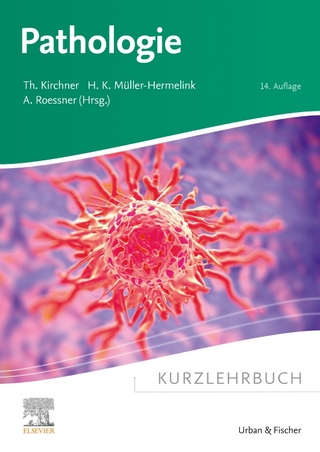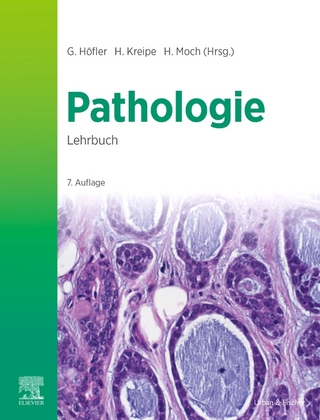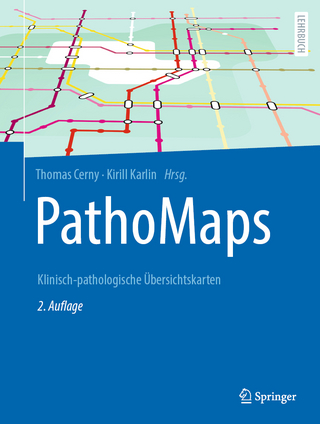
Alexander Disease
Morgan & Claypool Publishers (Verlag)
978-1-61504-764-2 (ISBN)
Its distinctive neuropathology consists of abundant Rosenthal fibers within astrocytes (one of the four major cell types of the central nervous system). Nearly all cases are caused by variants in the gene encoding the intermediate filament protein GFAP, but how these changes in GFAP lead to the widespread manifestations of disease is poorly understood.
Astrocytes, while discovered over a century ago, are themselves still much of a mystery. They exhibit considerable diversity, defy precise definition, and yet actively regulate many aspects of nervous system functioning.
We also have incomplete understanding of Rosenthal fibers, odd structures that contain GFAP as just one of many components. Whether they are toxic or protective is unknown. Moreover, Rosenthal fibers are not absolutely unique to Alexander disease, and are seen sporadically in a wide variety of other conditions, including brain tumors and multiple sclerosis.
GFAP is the third unknown. It is an ancient protein, arising early in the evolution of vertebrates, but its role in normal biology is still a matter of debate. Yet Alexander disease shows, without a doubt, that changing just a single of its 432 amino acids can lead to catastrophe, not just in the astrocytes where GFAP is produced but also in the other cells with which astrocytes interact.
Despite all of the unknowns, much has been learned in the past 20 years, and it is time to share this knowledge. This book is intended for recently diagnosed patients and families, as well as non-specialist researchers interested in this neurological disease. It covers historical origins, the state of current knowledge, and prospects for what lies ahead, with citations to the primary literature given throughout.
Albee Messing, V.M.D., Ph.D., is Professor of Neuropathology in the Department of Comparative Biosciences, and the Director of the Waisman Center (an international center dedicated to research, education, and clinical services in the field of intellectual and developmental disabilities), at the University of Wisconsin-Madison. Dr. Messing received his undergraduate degree in biology from Yale, in 1974, and his veterinary and doctoral degrees from the University of Pennsylvania, in 1978 and 1982, respectively. He continued post-doctoral studies in experimental and clinical neuropathology at Penn under the tutorship of Nicholas K. Gonatas, M.D., and then joined the faculty at Wisconsin in 1985. He is the recipient of both the Weil and the Moore Awards from the American Association of Neuropathologists, was a Shaw Scholar of the Milwaukee Foundation, and delivered the Peter Lampert Memorial Lecture at UCSD in 2003, the Santiago Ramon y Cajal Lecture for the Spanish Neurological Society in 2010, and the Parisi Lecture for the American Association of Neuropathologists in 2013. Dr. Messing's research is directed at understanding developmental and pathologic aspects of glial cell biology. With his collaborators, he developed tools for targeting gene expression to glia in vivo, and discovered GFAP as the genetic basis for Alexander disease. For over 20 years he has led an NIH-funded research program that is focused on understanding the mechanisms of Alexander disease and developing strategies for its treatment. He is a member of the scientific advisory boards for the United Leukodystrophy Foundation and for the Charcot-Marie-Tooth Association. He has published over 160 scientific peer-reviewed papers, reviews, book chapters, and books. Professor Alexei Verkhratsky, MD, PhD, D.Sc., Member of Academia Europaea, Member of the German National Academy of Sciences Leopoldina, Member of Real Academia Nacional de Farmacia (Spain), was born in 1961 in Stanislaw, Galicia, Western Ukraine. He graduated from Kiev Medical Institute in 1983, and received his PhD (1986) and D.Sc. (1993) in Physiology from Bogomoletz Institute of Physiology, Kiev, Ukraine. He joined the Division of Neuroscience, School of Biological Sciences in Manchester in September 1999, became a Professor of Neurophysiology in 2002, and served as Head of the Division from 2002 to 2004. From 2007 to 2010 he was appointed as visiting professor/Head of Department of Cellular and Molecular Neurophysiology at the Institute of Experimental Medicine, Academy of Sciences of Czech Republic. In 2010 A. Verkhratsky was appointed as a Research Professor of Ikerbasque (the Basque Research Council), in 2011 as an Honorary Visiting Professor at Kyushu University, Fukuoka, Japan and since 2012 has acted as Adjunct Scientific Director of the Achucarro Basque Centre for Neuroscience (Bilbao, Spain). Prof. A. Verkhratsky is a co-editor-in-chief of Cell Calcium (2000), and Membrane Transport & Signalling - Wiley Interdisciplinary Reviews (2009), Receiving Editor of Cell Death & Disease (2009), and a member of editorial boards of numerous scientific journals. Prof. Alexei Verkhratsky is an internationally recognised scholar in the field of cellular neurophysiology. His research is concentrated on the mechanisms of inter- and intracellular signalling in the CNS, being especially focused on two main types of neural cells, neurones and neuroglia. He made important contributions to understanding the chemical and electrical transmission in reciprocal neuronal-glial communications and on the role of intracellular Ca2+ signals in the integrative processes in the nervous system. Many of A. Verkhratsky's studies are dedicated to investigations of cellular mechanisms of neurodegeneration. In recent years he studies the glial pathology in Alzheimer disease. He authored a pioneering hypothesis of astroglial atrophy as a mechanism of neurodegeneration. Vladimir Parpura, M.D., Ph.D., holds both a medical degree, awarded from the University of Zagreb in Croatia in 1989, and a doctorate in Neuroscience and Zoology from Iowa State University in 1993. He has held faculty appointments at the Department of Zoology and Genetics, Iowa State University, and the Department of Cell Biology and Neuroscience, University of California Riverside. He is presently a tenured Associate Professor in the Department of Neurobiology, University of Alabama Birmingham, as well as a tenured Full Professor in the Department of Biotechnology, University of Rijeka, Croatia. He was elected as a Member of Academia Europaea (MEA) in 2012. His current research includes: i) studying the modulation of calcium-dependent glutamate release from astrocytes in health and disease; ii) visualization of vesicular/receptor trafficking; iii) examination of the nature and energetics of interactions between exocytotic proteins using single molecule detection approaches; iv) development of scaffolds and dispersible materials, most notably modified carbon nanotubes, which can be used in repair after brain injury and v) bio-mimetic micro-robotics. He has been interfacing neuroscience with nanoscience/nanotechnology, synthetic biology and biomedical engineering.
Introduction
1. History and Classical Concepts (The Pre-Genetic Era)
2. Genetics of Alexander Disease
3. Expansion of Clinical Phenotype and Remaining Gaps in Understanding
4. Mechanisms of Disease
5. In Search of Treatments
6. Conclusions
Other Resources and Organizations
Acknowledgments
References
Glossary
Author Biography
| Erscheinungsdatum | 27.12.2017 |
|---|---|
| Reihe/Serie | Colloquium Series on Neuroglia in Biology and Medicine: From Physiology to Disease |
| Mitarbeit |
Herausgeber (Serie): Alexei Verkhratsky, Vladimir Parpura |
| Verlagsort | San Rafael |
| Sprache | englisch |
| Maße | 152 x 229 mm |
| Gewicht | 825 g |
| Themenwelt | Medizin / Pharmazie ► Medizinische Fachgebiete ► Neurologie |
| Studium ► 2. Studienabschnitt (Klinik) ► Pathologie | |
| Naturwissenschaften ► Biologie | |
| ISBN-10 | 1-61504-764-6 / 1615047646 |
| ISBN-13 | 978-1-61504-764-2 / 9781615047642 |
| Zustand | Neuware |
| Informationen gemäß Produktsicherheitsverordnung (GPSR) | |
| Haben Sie eine Frage zum Produkt? |
aus dem Bereich


